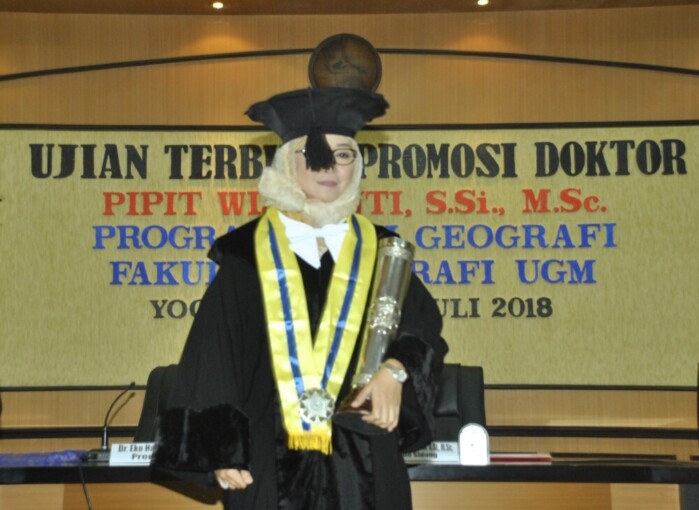
Hydrochemical characteristics in mintakat epikarst have temporal variations, whether seasonal or daily. The variations are dominated by the HCO?¯ and Ca²? chemical types. The condition is affected by the aquifer system of open karst with tunnels that have developed and in rainy season is dominated by conduit flow, in dry season is dominated by epikarst diffuse flow.
This was said by Pipit Wijayanti, S.Si., M.Si, geography education lecturer from Universitas Sebelas Maret in Surakarta during her doctoral promotion at Faculty of Geography UGM recently.
According to Pipit, characteristics of carbon absorption in mintakat epikarst vary towards seasons and are dependable on carbon dioxide supply. Carbon supply in rainy season is affected by conduit flow type, in dry season by respiration of ground and roots.
“Plants have roles in enlarging CO2 absorption that is dependable on the type and age of plant,” she said.
In her dissertation, she said that drought is a problem that often hits karst areas, including Gunungsewu area. So, to help farmers, plants that are able to stand limited water supply are needed.
Pipit said such selection of plant is necessary to get high production in dry season. So, it is expected that drought does not have to be followed by crops failure that may lead to hunger threats.
“Peanut is a plant of choice, because it absorbs little water with high carbon. This shows that peanut can stand well in karst areas,” she said.
Related to carbon absorption, said Pipit, peanut plant can have 9 times better absorption in empty land. Good growth of peanut in karst areas without supplement addition gives benefit to groundwater in the karst.
“Karst with secondary porosity system is vulnerable to groundwater pollution. Source of pollution is produced from agricultural activities so the fertilisers that are used would go directly to groundwater system through ponor,” she concluded.


